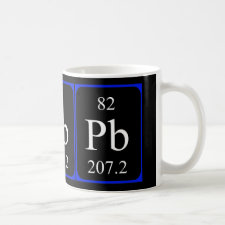
Authors: Behbahani M, Bagheri A, Taghizadeh M, Salarian M, Sadeghi O, Adlnasab L, Jalali K
Article Title: Synthesis and characterisation of nano structure lead (II) ion-imprinted polymer as a new sorbent for selective extraction and preconcentration of ultra trace amounts of lead ions from vegetables, rice, and fish samples.
Publication date: 2013
Journal: Food Chemistry
Volume: 138
Issue: (2-3)
Page numbers: 2050-2056.
DOI: 10.1016/j.foodchem.2012.11.042
Abstract: This paper describes the preparation of new Pb(II)-imprinted polymeric particles using 2-vinylpyridine as a functional monomer, ethylene glycol dimethacrylate as the cross-linker, 2,2'- azobisisobutyronitrile as the initiator, diphenylcarbazone as the ligand, acetonitril as the solvent, and Pb(NO3)2 as the template ion, through bulk polymerisation technique. The imprinted lead ions were removed from the polymeric matrix using 5 mL of HCl (2 mol.L-1) as the eluting solvent. The lead ion concentration was determined by flame atomic absorption spectrometry. Optimum pH for maximum sorption was obtained at 6.0. Sorption and desorption of Pb(II) ions on the IIP particles were quite fast and achieved fully over 5 min. In the proposed method, the maximum sorbent capacity of the ion-imprinted polymer was calculated to be 75.4 mg g-1. The preconcentration factor, relative standard deviation, and limit of detection of the method were found to be 245, 2.1%, and 0.42 ng mL-1, respectively. The prepared ion-imprinted polymer particles have an increased selectivity toward Pb(II) ions over a range of competing metal ions with the same charge and similar ionic radius. This ion-imprinted polymer is an efficient solid phase for extraction and preconcentration of lead ions in complex matrixes. For proving that the proposed method is reliable, a wide range of food samples with different and complex matrixes was used
Template and target information: lead ion, Pb(II)
Author keywords: lead, Ion-imprinted polymer, Nanostructure, Selective preconcentration, environmental samples, Flame atomic absorption spectroscopy



Join the Society for Molecular Imprinting

New items RSS feed
Sign-up for e-mail updates:
Choose between receiving an occasional newsletter or more frequent e-mail alerts.
Click here to go to the sign-up page.
Is your name elemental or peptidic? Enter your name and find out by clicking either of the buttons below!
Other products you may like:
 MIPdatabase
MIPdatabase









